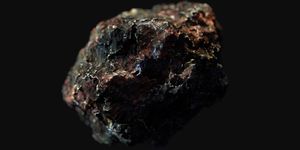The Food & Drug Administration has warned people not to eat too much of one common, if not commonly loved, Halloween candy. A compound derived from licorice root, glycyrrhizin, is found in black licorice, and eating too much of it can cause levels of potassium to fall in the body. That can lead to abnormal heart rhythms in some people, along with lethargy, edema or swelling, high blood pressure, and even congestive heart failure.
Several journal articles have connected health problems in people over 40 to black licorice, some of them had a history of heart problems. Black licorice is not suspected to cause any permanent damage, however. Potassium levels will usually return to normal when licorice consumption stops.
The FDA suggests that people should not eat too much of it, no matter how old they are. If heart problems are experienced when eating it, stop eating it immediately and call your doctor. It could also interact with medications. While licorice is sometimes used as a folk remedy (and there is currently insufficient data to support conclusions about the veracity of those claims), it is sometimes sold without the potentially harmful molecule, as deglycyrrhizinated licorice, or DGL.








